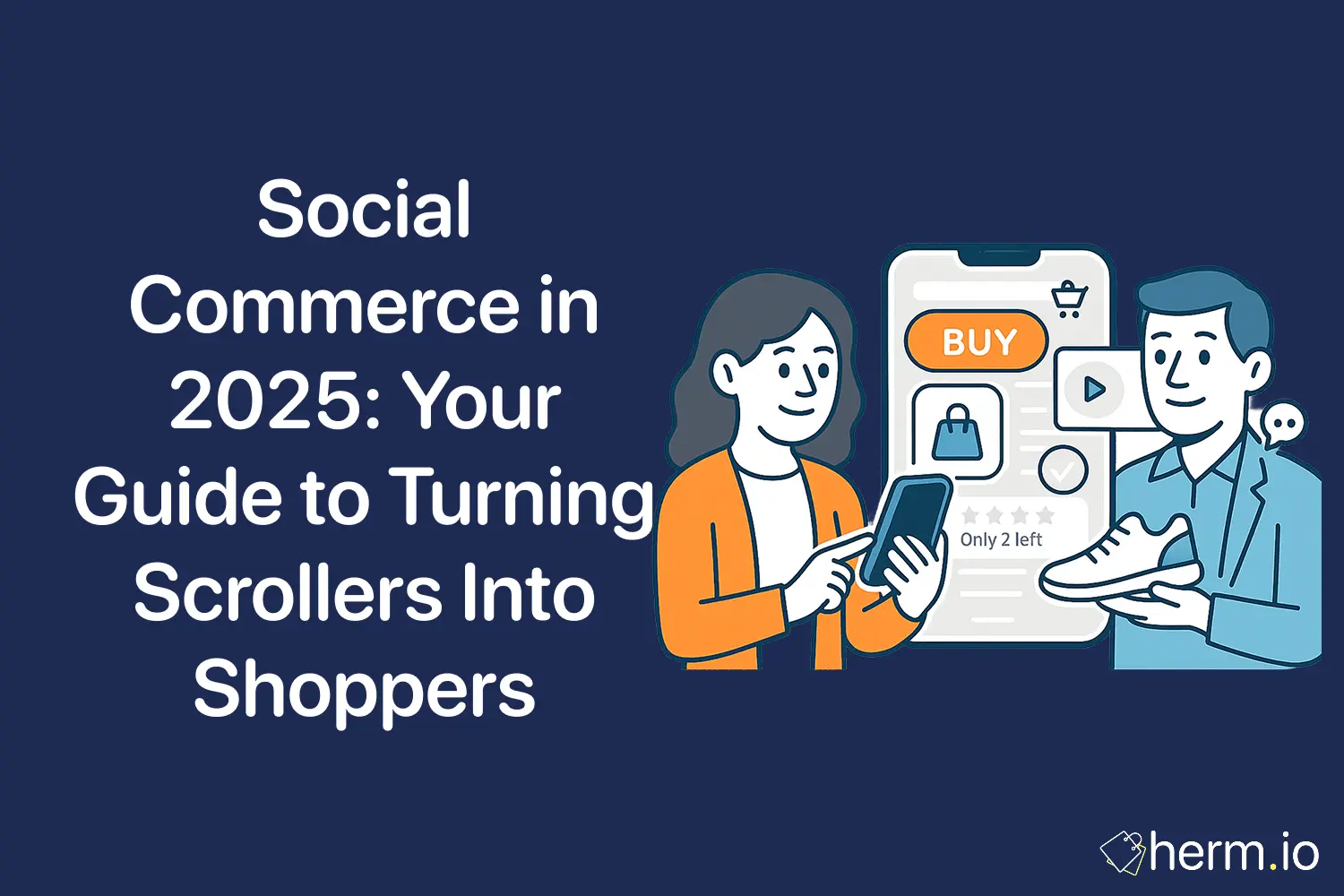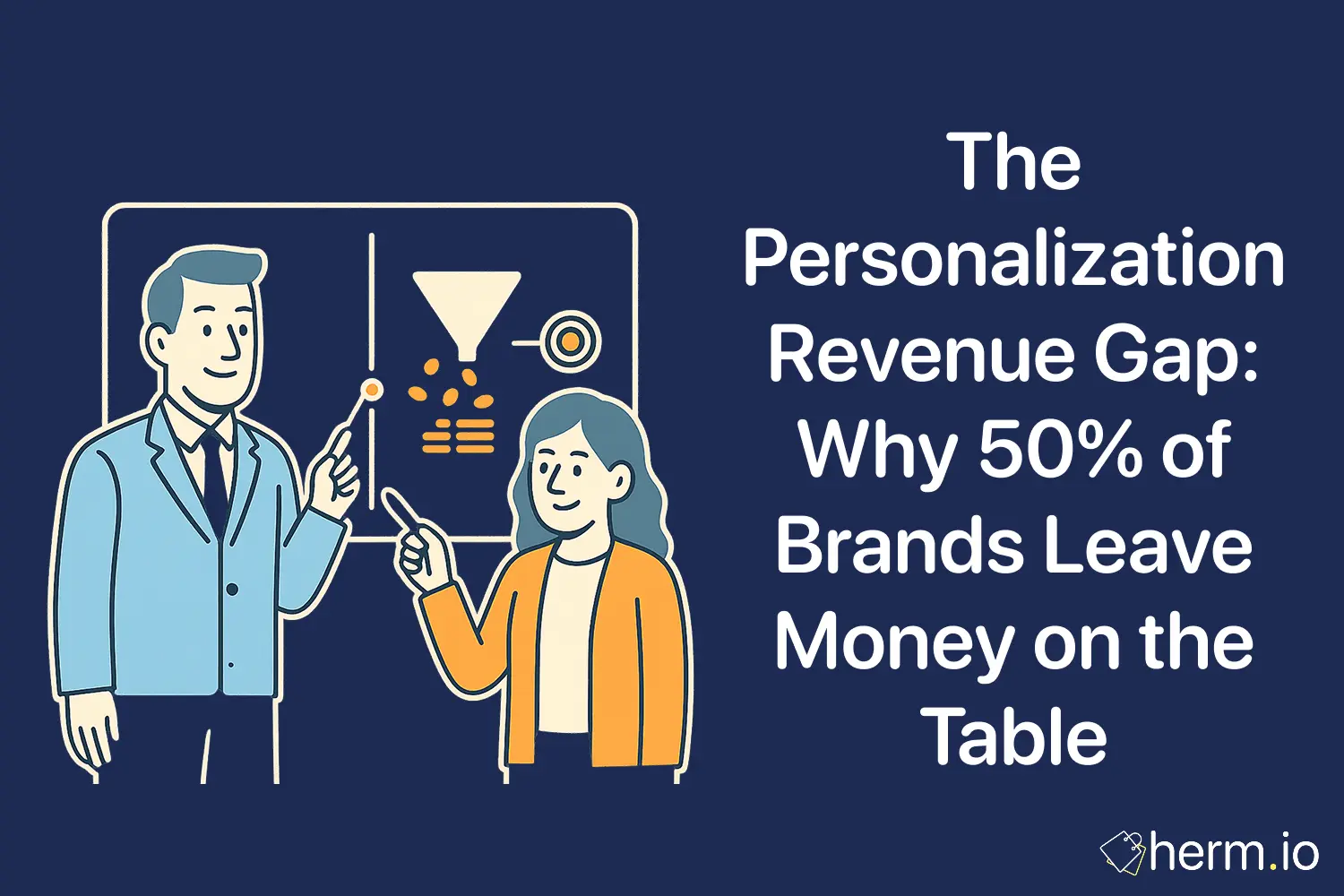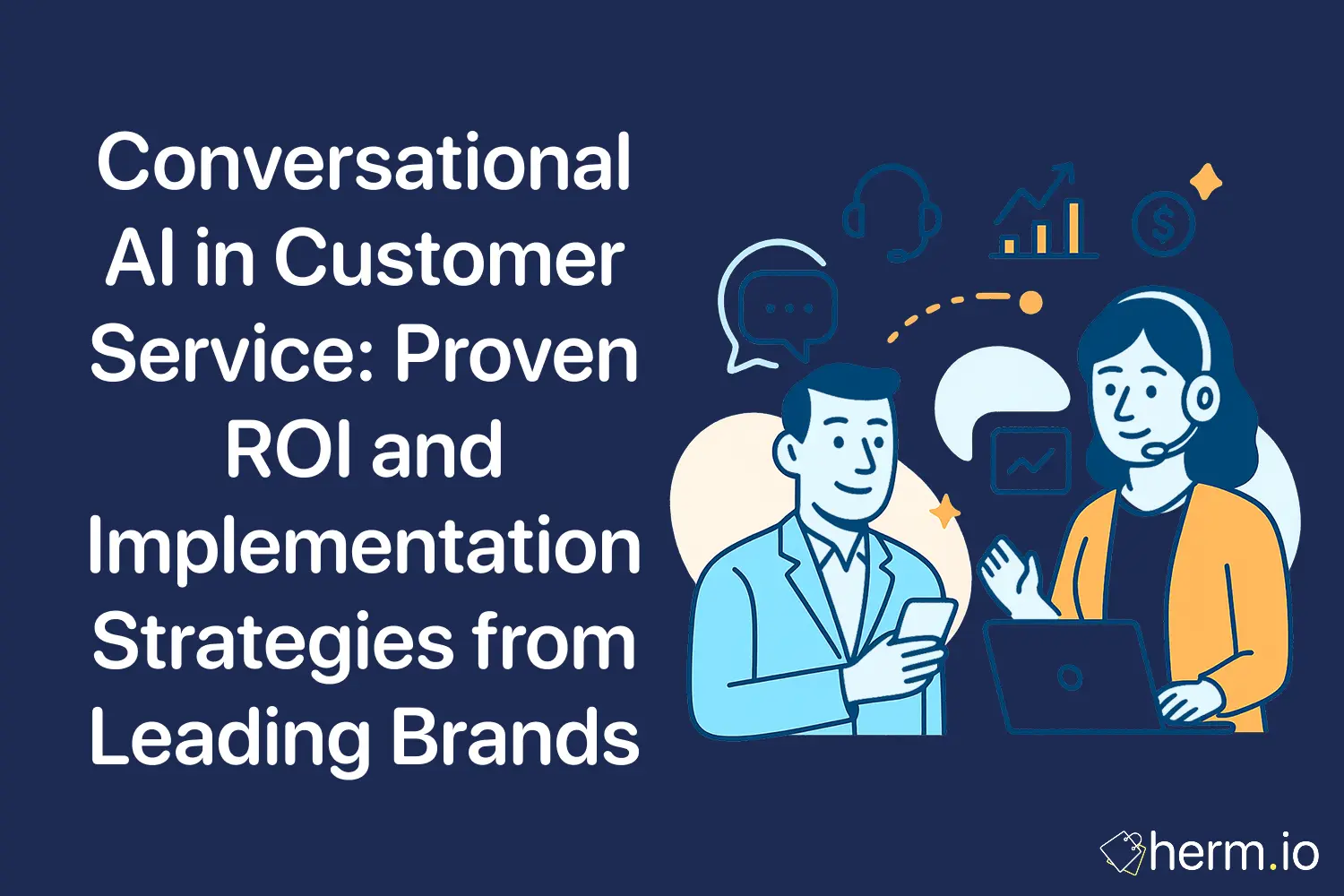
Picture yourself browsing a small independent bookshop where the owner quietly observes your reading habits over several visits. Rather than overwhelming you with suggestions immediately, she waits until you've established a comfortable rhythm of discovery. When she finally approaches with a recommendation, it feels perfectly timed and genuinely helpful because she's invested in understanding your preferences rather than simply pushing inventory.
What strikes me as particularly important about this interaction is how trust develops naturally when someone demonstrates genuine care for your interests rather than their own immediate gain. The bookseller succeeds because she recognises that meaningful relationships require patience, observation, and respect for boundaries. Digital personalisation should follow these same principles, yet too many businesses rush toward data collection without first establishing the foundation of trust that makes such sharing worthwhile.
We have a responsibility to examine how our approach to customer data affects the very people we aim to serve. This exploration reveals how thoughtful organisations are building personalisation strategies that strengthen rather than exploit customer relationships, creating experiences that feel genuinely helpful rather than invasively manipulative.
Understanding the Modern Customer's Relationship with Data
The Trust Deficit in Digital Interactions
Like watching patterns emerge in a carefully tended garden, observing consumer behaviour around data sharing reveals fascinating shifts in how people approach digital relationships. The contemporary customer brings a level of wariness to data exchanges that previous generations never needed to develop. This scepticism didn't develop overnight; it represents a natural response to years of data misuse, security breaches, and the uncomfortable realisation that personal information often becomes a commodity traded without consent.
Research from the Data & Marketing Association illuminates this tension perfectly: whilst 73% of consumers express willingness to share personal data with companies they trust, only 23% currently trust businesses to handle their information responsibly. This gap represents more than a mere marketing challenge; it reflects a fundamental breakdown in the social contract between businesses and customers.
Consider how this dynamic plays out in everyday interactions. When someone visits a website and immediately encounters a barrage of cookie consent notices, newsletter signup requests, and account creation prompts, the experience feels more like an interrogation than an invitation. The business is essentially asking for trust before demonstrating any reason to deserve it.
The Psychology of Digital Consent
What emerges from studying consumer behaviour is that people instinctively understand the concept of reciprocal value exchange. Just as you might share personal stories with a friend who listens thoughtfully and responds with genuine interest, customers become more willing to share data when they see clear evidence that this information will improve their experience in meaningful ways.
Spotify demonstrates this principle beautifully through their annual Wrapped campaign. Rather than hiding their data collection practices, they transform user listening habits into an entertaining, shareable experience that customers genuinely enjoy. This approach succeeds because it makes data usage transparent whilst delivering immediate value that customers can appreciate and understand.
The campaign consistently generates some of Spotify's highest engagement rates of the year, with 60 million users sharing their personalised summaries in 2022. This success stems from treating data collection as a collaborative process rather than something extracted from customers without their awareness.
Building Consent as a Foundation for Relationship
Moving Beyond Compliance Theatre
We have a responsibility to acknowledge that many current approaches to consent collection feel performative rather than genuine. The endless parade of cookie notices and privacy policy updates often serves legal requirements whilst failing to create meaningful understanding between businesses and customers. True consent requires more than technical compliance; it demands clear communication about value exchange.
ASOS, the British online fashion retailer, exemplifies a more thoughtful approach through their Style Match feature. Instead of secretly tracking browsing behaviour and hoping customers won't notice, they explicitly invite customers to upload photos of clothing they find appealing. This transparent request immediately communicates the purpose: helping customers discover items that match their aesthetic preferences.
The results speak to the power of honest communication about data usage. ASOS reported a 200% increase in customer engagement with recommended products following the implementation of Style Match, as documented in their 2022 annual sustainability and impact report. Customers responded positively because they understood exactly what information they were sharing and could immediately see how it benefited them.
Creating Meaningful Choice
Like watching a careful negotiation between equals, effective consent processes recognise that customers deserve genuine choice rather than manipulative design patterns that push them toward sharing more than they're comfortable with. This means designing interfaces that make it easy to say no whilst still delivering valuable experiences to those who choose minimal data sharing.
The financial services sector provides particularly instructive examples of this principle in action. JP Morgan Chase implemented a privacy-first Customer Data Platform architecture that allows customers to maintain separate consent preferences for different product lines. Someone might readily share information to receive personalised investment recommendations whilst declining targeted credit card offers.
This granular approach increased overall consent rates by 28% compared to their previous all-or-nothing system. Customers appreciated having genuine control over their data sharing decisions, and the bank benefited from more engaged participants in their personalisation programmes.
Implementing Zero-Party Data Strategies
The Power of Explicit Information Sharing
Zero-party data represents information that customers intentionally and proactively share with brands. This data type offers the highest trust quotient because customers understand exactly what they're providing and why. The challenge lies in creating experiences that feel engaging rather than extractive.
Sephora's Beauty Insider programme demonstrates masterful zero-party data collection through their Beauty IQ quiz and virtual consultations. These interactions feel more like entertainment than data collection because they're designed around customer needs rather than business requirements. Customers voluntarily share skin concerns, colour preferences, and beauty goals through experiences that provide immediate value.
The programme has grown to over 25 million members, with participants spending 15 times more than non-members, according to Sephora's 2021 loyalty programme analysis. This success stems from making data sharing feel collaborative rather than transactional.
Building Progressive Understanding
What emerges from studying successful personalisation implementations is that the most effective approaches build customer understanding gradually rather than demanding extensive information upfront. Like watching a friendship develop naturally over time, these systems earn permission to learn more as they demonstrate value with initial information.
Booking.com employs this strategy effectively by starting with essential travel information and progressively learning about preferences through booking behaviour and optional profile enhancements. Their system adapts recommendations based on whether someone consistently books budget accommodations or luxury hotels, business districts or tourist areas, without requiring invasive personal information.
This approach contributed to a 15% increase in booking conversion rates, as documented in their 2020 personalisation case study. Customers appreciated that the system became more helpful over time without requiring them to complete exhaustive preference surveys.
Technical Infrastructure for Ethical Personalisation
Consent Management as Customer Experience
Modern consent management platforms represent a fundamental shift from viewing privacy compliance as a burden to recognising it as an opportunity for customer experience enhancement. Leading solutions like OneTrust and Cookiebot provide granular control interfaces that allow customers to choose precisely how their data is used.
The key lies in making these interfaces intuitive rather than intimidating. Instead of presenting users with complex legal language, effective consent management systems use plain English explanations that clearly communicate value propositions. "We'd like to remember your preferences so you don't have to re-enter them each visit" feels much more respectful than "We use persistent cookies for session management purposes."
Privacy-First Customer Data Platforms
Privacy-first Customer Data Platforms now include built-in consent enforcement mechanisms that automatically respect customer preferences across all touchpoints. These systems ensure that someone who opts out of email personalisation doesn't receive targeted email content, even if they continue to receive operational messages.
This technical infrastructure supports the kind of respectful data usage that builds long-term customer relationships. When customers can trust that their preferences will be honoured consistently, they become more willing to engage with personalisation features that genuinely benefit them.
Measuring Success in Privacy-Respecting Personalisation
Trust Metrics That Matter
Traditional personalisation metrics focus on engagement rates, conversion improvements, and revenue attribution. Privacy-first strategies require additional measurement frameworks that capture customer trust and satisfaction alongside business performance indicators.
Key indicators include consent rates and retention patterns, customer service sentiment regarding data usage, voluntary data sharing behaviours, and programme advocacy rates. These metrics help businesses understand whether their personalisation efforts are building or eroding customer trust over time.
Netflix provides an excellent example of comprehensive measurement approaches. They track not just immediate engagement with recommendations, but long-term subscription retention among users who actively engage with personalised features. Their research revealed that subscribers who regularly rate content and use personalised recommendation features demonstrate 40% higher lifetime value compared to passive users.
This finding reinforced their strategy of encouraging active participation in personalisation rather than relying solely on passive data collection. Customers who feel like collaborative participants in the personalisation process develop stronger relationships with the service.
Long-Term Relationship Value
What strikes me as particularly important about measuring privacy-first personalisation success is the emphasis on relationship durability rather than short-term conversion metrics. Customers who trust how their data is being used tend to become more valuable over time as they share additional information and engage more deeply with personalised experiences.
This long-term perspective requires patience and investment in building genuine customer relationships rather than optimising for immediate returns. However, businesses that commit to this approach often discover that customer lifetime value improvements far exceed the additional effort required to implement privacy-respecting systems.
Industry-Specific Implementation Approaches
Fashion and Retail Personalisation
Fashion retailers face unique personalisation challenges because style preferences are highly individual and context-dependent. Visual preferences often defy demographic categorisation, making traditional profiling approaches less effective than systems that focus on aesthetic choices.
ASOS addresses this challenge through their visual search technology, which allows customers to upload photos of clothing they find appealing rather than describing preferences in words. This approach respects privacy whilst delivering highly accurate recommendations based on actual visual preferences rather than assumed demographic correlations.
The visual search feature drives 30% higher conversion rates compared to traditional category browsing, according to their 2022 technology innovation report. Customers appreciate being able to communicate their preferences directly rather than hoping that algorithmic guesswork will understand their aesthetic sensibilities.
Financial Services Privacy Balance
Banks and investment platforms must balance personalisation benefits with extremely strict privacy requirements. The regulated nature of financial data creates both challenges and opportunities for privacy-first personalisation approaches.
Wealthfront solved this challenge by creating anonymised benchmarking systems that provide personalised insights without exposing individual customer data. Their approach allows customers to see how their investment performance compares to similar investor profiles whilst maintaining complete anonymity for all participants.
This strategy increased customer engagement with their advisory services by 25% whilst ensuring full regulatory compliance. Customers appreciated receiving personalised insights that helped them make better financial decisions without feeling that their privacy was compromised.
Media and Content Personalisation
Streaming services and media companies collect vast amounts of behavioural data, creating significant privacy considerations. The key lies in helping customers understand how this data collection improves their experience rather than hiding tracking practices.
The New York Times addressed this challenge by implementing reader-controlled personalisation settings that allow subscribers to choose their level of content customisation. Some readers prefer minimal personalisation to discover diverse perspectives, whilst others want highly customised content feeds.
By offering choice rather than imposing personalisation, they increased subscriber satisfaction scores by 15% whilst reducing privacy concerns. This approach recognises that personalisation preferences themselves are personal and deserve to be respected.
Creating Implementation Frameworks
Phase One: Foundation Building
The journey toward privacy-first personalisation begins with comprehensive privacy policy updates that explain data usage in plain language rather than legal jargon. This foundation work includes implementing basic consent management systems that offer genuine choice rather than compliance theatre.
Focus initially on collecting zero-party data through engaging interactive experiences rather than lengthy forms. These early interactions should provide immediate value to customers whilst building understanding about how their information will be used to improve their experience.
Phase Two: System Integration
Deploy privacy-first Customer Data Platform solutions that enforce consent preferences across all customer touchpoints. Develop progressive profiling strategies that gradually build customer understanding whilst providing immediate value at each interaction point.
Create transparent reporting systems that show customers how their data creates personalised benefits. This transparency builds trust whilst helping customers make informed decisions about future data sharing opportunities.
Phase Three: Advanced Optimisation
Implement contextual personalisation algorithms that reduce reliance on personal data whilst maintaining effectiveness. Develop customer education programmes that help people understand personalisation benefits and make informed consent decisions.
Build advocacy programmes that encourage satisfied customers to share their positive experiences with privacy-respecting personalisation. Word-of-mouth recommendations from trusted sources often carry more weight than marketing messages when it comes to data sharing decisions.
Frequently Asked Questions
How can personalisation be effective without extensive data collection?
Contextual personalisation often proves more effective than demographic-based approaches because it focuses on behavioural patterns and explicit preferences rather than assumed characteristics. Companies like Netflix and Spotify achieve excellent results by understanding what someone wants to accomplish rather than who they are demographically. The key lies in observing engagement patterns and asking customers directly about their preferences rather than making assumptions based on personal characteristics.
What happens if customers choose minimal data sharing?
Businesses can still deliver significant value through contextual personalisation, progressive enhancement, and explicit preference collection. Customers who initially choose minimal sharing often become more willing to share data once they experience the benefits and trust the company's approach. The goal should be earning permission over time rather than demanding it upfront. Many customers appreciate being able to control their privacy level whilst still receiving helpful recommendations.
How do privacy regulations affect international personalisation strategies?
Global privacy frameworks are converging around similar principles of transparency, choice, and data minimisation. Companies that build systems around the most stringent requirements typically find compliance with other frameworks straightforward. The investment in privacy-first architecture pays dividends across multiple markets, as customers worldwide increasingly expect respectful data handling practices.
What metrics should companies track beyond traditional conversion rates?
Trust metrics matter as much as traditional performance indicators in privacy-first personalisation. Monitor consent rates, customer service sentiment regarding privacy, voluntary data sharing behaviours, and long-term relationship value. Companies that optimise for trust often discover that traditional metrics improve as a natural consequence of stronger customer relationships.
How can small businesses implement privacy-first personalisation without extensive technical resources?
Start with simple progressive profiling and explicit preference collection using existing email marketing platforms and e-commerce systems. Many current solutions include basic privacy controls that small businesses can implement immediately. Focus on zero-party data collection through surveys, quizzes, and preference centres rather than complex tracking systems. The emphasis should be on building genuine customer relationships rather than sophisticated technical implementations.
References and Further Reading
To learn more about the case studies mentioned in this article, consider researching:
"Spotify Wrapped campaign user engagement personalisation strategy annual report" - Spotify's annual transparency reports and marketing case studies provide detailed insights into how they transform data usage into customer engagement opportunities whilst maintaining user trust.
"ASOS Style Match visual search personalisation retail innovation case study annual sustainability report 2022" - Look for ASOS's annual reports and technology innovation publications that detail their visual search implementation and customer engagement metrics.
"Sephora Beauty Insider personalisation programme loyalty retail analysis 2021" - Sephora's investor relations materials and retail industry case studies document their loyalty programme success and personalisation strategies.
"JP Morgan Chase customer data platform privacy-first architecture consent management financial services" - Search for fintech industry reports and regulatory compliance case studies that discuss privacy-compliant personalisation strategies in financial services.
"Booking.com progressive profiling personalisation travel industry conversion optimization 2020" - Booking.com's technology conference presentations and travel industry publications detail their personalisation approach and conversion improvements.
"Wealthfront anonymised benchmarking personalisation financial services regulatory compliance" - Look for fintech industry reports and Wealthfront's regulatory filings that discuss their privacy-compliant personalisation strategies.
"New York Times reader-controlled personalisation content strategy digital subscription 2021-2022" - The New York Times' annual reports and digital media industry analyses contain metrics on their personalisation-driven subscription growth and reader satisfaction improvements.

Isla Penelope Brooks
I'm a British data storyteller and analytics specialist based in Munich. As a Technical University of Munich graduate, I transform complex data into meaningful insights. I'm passionate about equity in data and believe in the responsibility that comes with shaping what people see and think through marketing.

.png)








.png)

.png)
.png)
.png)